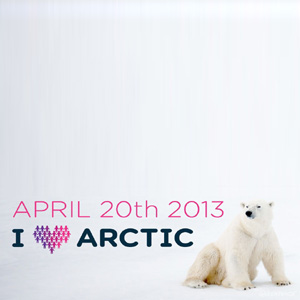
More evidence that low-calorie sweeteners are bad for your health
Studies show that artificial sweeteners can raise the risk of hypertension, metabolic syndrome, type 2 diabetes and heart disease, including stroke.

The Arctic. You know, that remote place that ‘explorers’ like to conquer but beyond that that has nothing to do with the rest of us.
Well it turns out that the Arctic is with us every day. It’s right here, in our homes and our gardens; and inevitably what we do the the Arctic we do to ourselves. That’s why we are supporting the Greenpeace ‘I ♥ the Arctic’ campaign and international day of action on April 20.
The fragile Arctic is under threat from both climate change and oil drilling. Scientists say that in our lifetimes the North Pole could become ice free in summer.
As climate change melts the Arctic ice, oil companies are moving in to extract more of the fossil fuels that caused the melt in the first place. But above the Arctic circle, freezing temperatures, a narrow drilling window and a remote location mean that an oil spill would be almost impossible to deal with. It’s a catastrophe waiting to happen.
The day of action will raise awareness of the Greenpeace campaign and the call for a global sanctuary to be declared around the North Pole, and for a ban on offshore oil drilling.
We believe passionately in protecting the world we live in, and know the future lies in “soil not oil”.
Organic farming is naturally low carbon as it avoids the use of energy-intensive fossil fuels. It also helps reduce atmospheric CO2 by enriching the soil with ploughed in (carbon rich) plant matter. So not only is organic great for us, it’s great for the planet.
There are pressing health reasons to protect the Arctic too. According to the scientists at ArcRisk – an EU project looking at the health impacts of a melting Arctic – people living in the northernmost areas of Europe are on the receiving end of more toxic chemicals than the rest of Europe.
Air and water mass movements push some of these persistent organic pollutants towards the Arctic. But these movements can potentially be altered by melting Arctic ice. It is possible that in the future all the ‘stuff’ we’ve dumped into the sea and air, which has found its way to the Arctic, could eventually be redistributed back to the rest of us.
Many of the contaminants found in Arctic people – as well as in iconic Arctic animals such as the polar bear, now one of the most polluted animals on the planet – are hormone disrupting. Known contaminants include fluorinated and brominated compounds and bisphenol A as well as heavy metals such as mercury. These poisons are linked to reproductive and developmental abnormalities, neurological disorders and even cancer.
Clearly we need an Arctic that is cleaner and healthier – not dirtier and more decimated. Please add your name to the 3 million who have already signed the Save the Arctic petition to help protect this unique landscape for all life on Earth.
You can do this by signing up at www.savethearctic.org or by texting ARCTIC + your name to 66777 (standard charges apply).
Pat Thomas, Editor

Please subscribe me to your newsletter mailing list. I have read the
privacy statement